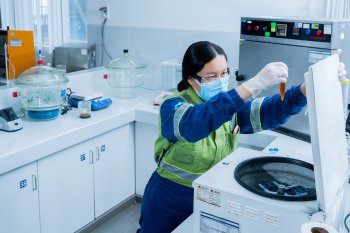
The objective of the study was to develop a methodology that allows defining "SMART" social and environmental performance metrics to be measured in an affordable and regular manner, with the goal of making data collection a routine practice within the MarinTrust program.
As part of the process, other standards’ requirements were assessed and a range of MarinTrust stakeholders interviewed to investigate current requirements and the potential effect of including such metrics within the standard system as it is. Each identified metric was then assessed against the following criteria: Efficiency, Effectiveness, Coherence, Relevance and Value-added. A final report listing the 14 “shortlisted” metrics was produced and the Executive Summary can be found in the Downloads Section. Please contact MarinTrust at [email protected] if you are interested in the full report.
Following this initial work, it was determined that additional investigation into each proposed metric would be required by those with audit experience. This was in order to assess the practicality of requesting specific information during a site audit, or requesting from a certificate holder and verifying during an audit, and/or obtaining through some kind of online research or remote sensing.
The aim of the follow up work was to:
- Look at the shortlisted metrics and:
- Identify those metrics that can be easily implemented and are auditable in a marine ingredient production facility, or are otherwise reasonably accessible and verifiable.
- Identify those metrics that may need additional investigation before implementation and outline a potential plan for this.
- Reduce the list to the minimum practical metrics consistent with facilitating MarinTrust to measure progress to its environmental and social objectives to ensure affordability.
- Refine the definitions of the chosen metrics and ensure they are actually and consistently measurable.
- Discuss the logistics to ensure the necessary data collection and/or verification can take place during routine audits, requested from a certificate holder and verified during an audit and/or found through some kind of online research or remote sensing.
- Identify the most suitable timeline for the trial, if necessary, and implementation of the selected metrics and discuss the scope of the roll-out including geographic location, number of sites, and position within the MarinTrust programme.
Next steps:
- Identify those metrics from the shortlist to include within the standard. These will then be reviewed as part of V3.0 development of the MarinTrust Standard.
- Commission a baseline study to start collection data linked to the shortlisted metrics to identify those that are practicable in reality.
